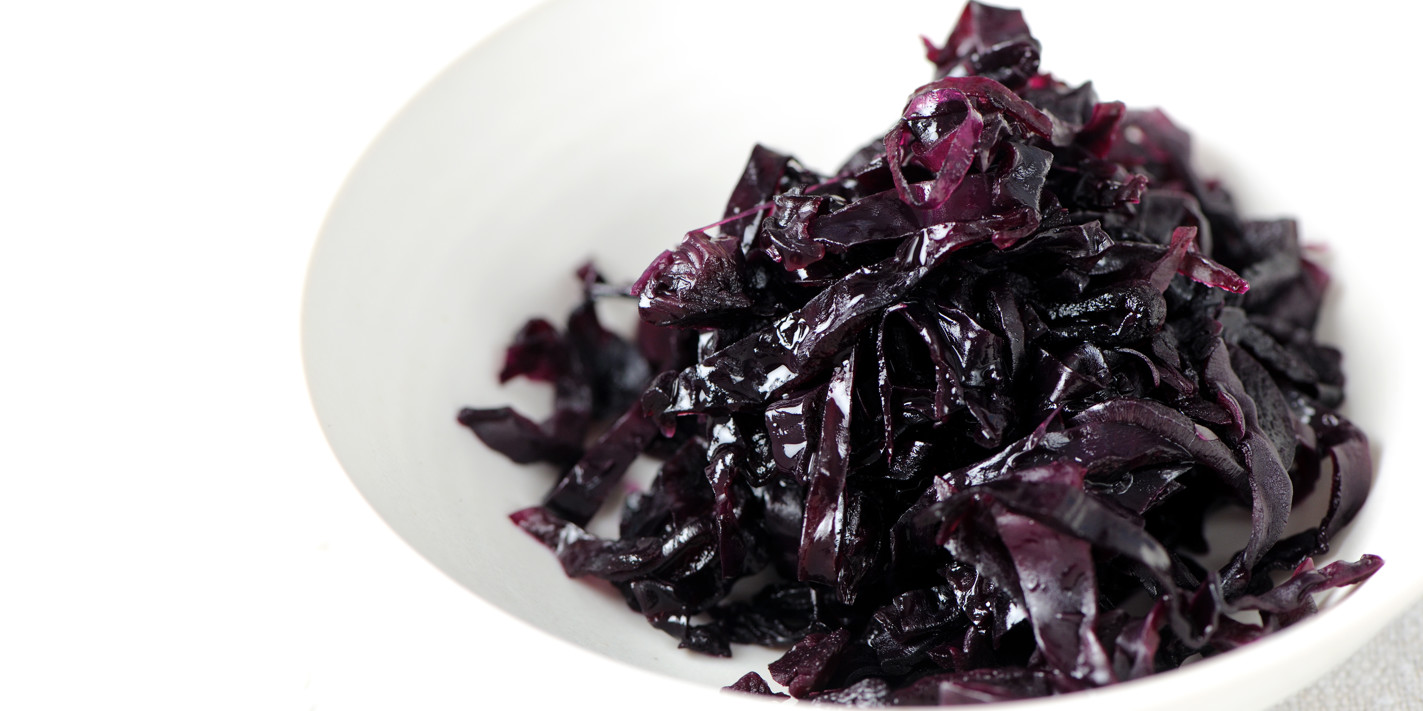This content is for Great British Chefs Club members only.
Already a Silver or Gold member? Sign in here.

Of all the accompaniments to grace our dinner tables, the deep purple hue of red cabbage is perhaps the most striking. There are a number of ways to cook red cabbage but the most common are to braise or pickle it. It is also great finely shredded in salads and coleslaws or added to stir-fries. Red cabbage is full of vitamins (A, C and K), minerals and anti-oxidants so eating it raw or juicing it provides a fantastic health boost.
Perhaps one of the more unusual qualities of this brilliant brassica is that its juice can act as a home-made pH indicator – it can be used to test the acidity of liquids, turning red in acidic conditions, blue in neutral and greenish yellow in basic solutions. This sensitivity to acidity causes regional variations in colour – the more acidic the soil, the redder the cabbage, while more neutral soils produce a deeper purple colour.
Red cabbage (also known as purple cabbage) is in season from September to December though some varieties can be harvested as early as July.
Choose red cabbages that are densely packed and heavy in weight with firm outer leaves. Avoid cabbages that are light, soft and have too many outer leaves removed.
Red cabbages can be stored in a cool, dark place for a week to ten days.
Before cooking, remove any tired or discoloured leaves, cut the cabbage into quarters, remove the stalks and shred or chop the leaves.
Always cook red cabbage with a little vinegar as this preserves the beautiful purple colour – without it, the cabbage will turn blue!
Braising is probably the most common method of cooking red cabbage - it takes very little effort and gives wonderful results especially when braised slowly with apples, red wine and spices such as cinnamon, cloves, nutmeg or juniper berries.
Red cabbage can also be boiled. To preserve the crunch, cook in salted boiling water with a teaspoon of vinegar for 5 minutes unless a softer consistency is desired in which case cook for a little longer. Alternatively, red cabbage is very good cooked sous vide as the cabbage will become tender without losing its shape or texture.
Red cabbage has traditionally been pickled, particularly across northern Europe, as a way to stretch out the cabbage-eating season. This technique allows you to infuse the cabbage with a wide variety of aromatics such as mustard seeds, star anise, cloves or cinnamon. Adding chillis and ginger, as in Josh Eggleton’s Picked red cabbage recipe, will add a welcome kick of heat to this wintery staple.
Red cabbage can stand up to a whole host of flavours from soy sauce in an Asian salad to heady spices such as cinnamon, nutmeg, cloves and allspice. Onions, sweet apples and raisins also bring out the best in this earthy vegetable which goes beautifully with meats such as pork, duck, venison partridge and sausages. Pickled red cabbage is an excellent match for cheese, cold meats and smoked fish.
Red cabbage braised with vinegar and apples makes a traditional sweet and sour recipe to accompany a roast and beautifully spiced versions are commonly found at Christmas celebrations served with turkey, goose or baked ham.
Red cabbage is also popular served raw in coleslaws and salads and served as a side dish as in Josh Eggleton’s spatchcock chicken recipe.
Get in touch